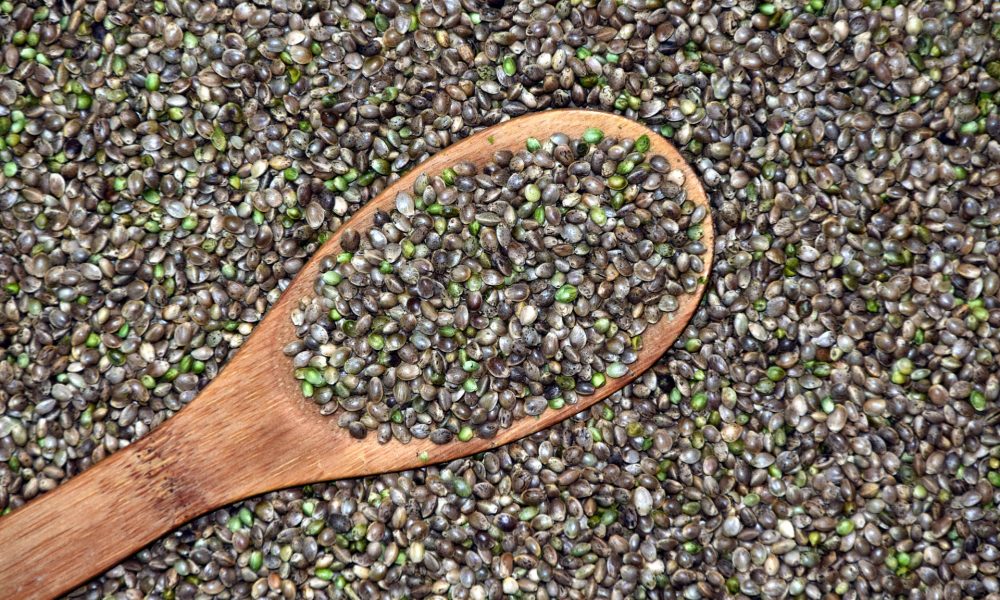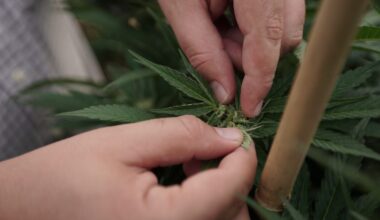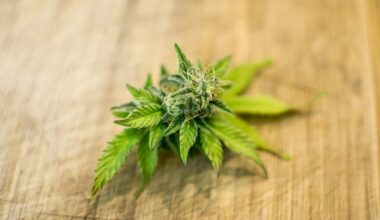The U.S. Department of Agriculture (USDA) recently released a report on the hemp industry boom in Europe, recognizing that the cannabis crop is an increasingly important economic commodity that could also help the region achieve bold climate-related goals.
The USDA report—titled “European Union: Market Trends and Regulations for Industrial Hemp in the European Union” and released late last month—discusses how hemp has been grown and utilized in the region for “thousands of years,” and how cannabis products from the non-intoxicating plant are growing in popularity as more countries depart with prohibition.
“All parts of the plant were consumed in European countries since the Middle Age: hemp seeds, leaves, flowers, and extracts,” the report says. “Hemp has also been used in ancient medicines and as a source of fiber for rope making or textiles.”
But, as in the U.S., Europe saw hemp bans in the 20th century, which partly contributed to the region’s increased reliance on less sustainable, “fossil-based alternatives” for industrial purposes.
The re-legalization of hemp has created renewed interest in the plant, and the European Union (EU) is currently “evaluating opportunities to expand hemp usage,” USDA said. One of the motivations behind that trend is the region’s interest in reducing “the use of fossil fuels and carbon intensive products.”
“Hemp cultivation offers a range of environmental benefits, including carbon storage, erosion prevention, increased biodiversity, low to no pesticide requirement, and breaking disease cycles in crop rotation,” the report says. “The hemp plant’s dense leaves create natural soil cover, which can reduce water loss and protect against soil erosion. In terms of biodiversity benefits, the hemp plant’s flowering cycle creates large amounts of pollen, which supports the pollination of other crops.”
“Due to the environmental benefits of hemp and its versatility in industrial and food uses, hemp production has been increasing in the European Union,” the department said.
According to the European Commission, hemp cultivation has rapidly grown in recent years, with 34,960 hectares of land dedicated to hemp farming in 2019. France is the most profile cultivator of the crop, followed by Italy, the Netherlands and and Estonia.
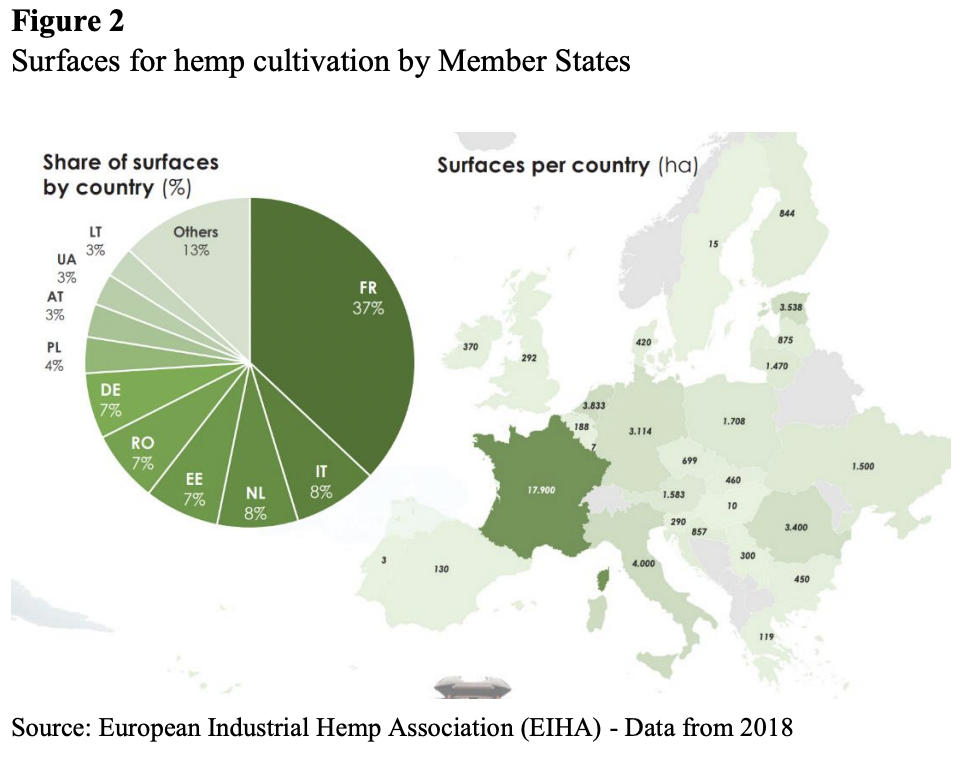
Via USDA.
The report also notes that EU recently approved an updated Common Agricultural Policy (CAP) that takes effect at the beginning of 2023 and lasts until 2027. Regulators said that the new policy could make hemp farmers eligible for direct payments for certain varieties, as long as they don’t exceed 0.3 percent THC by dry weight.
For U.S. stakeholders interested in entering the European market, USDA said it’s important for them to understand that hemp regulations vary from country to country. While businesses only qualify for EU’s direct payments for hemp containing up to 0.3 percent THC, it’s “possible to plant hemp with THC levels over the EU limit if it is authorized by national regulations.”
“Please note that EU Member States may also apply more restrictive rules,” USDA said. “U.S. producers seeking to export to the EU must comply with the same EU rules and requirements regarding seed production, certification, labeling, and packaging as seed harvested in the EU. The marketing of propagating material of hemp is not protected by EU legislation.”
“The European market for hemp is estimated to grow over the next decade,” the report continues, noting that there’s growing demand for cannabis food items, pet items and cosmetics, as well as “tea, essential oils, medical applications, food supplements, and other applications.”
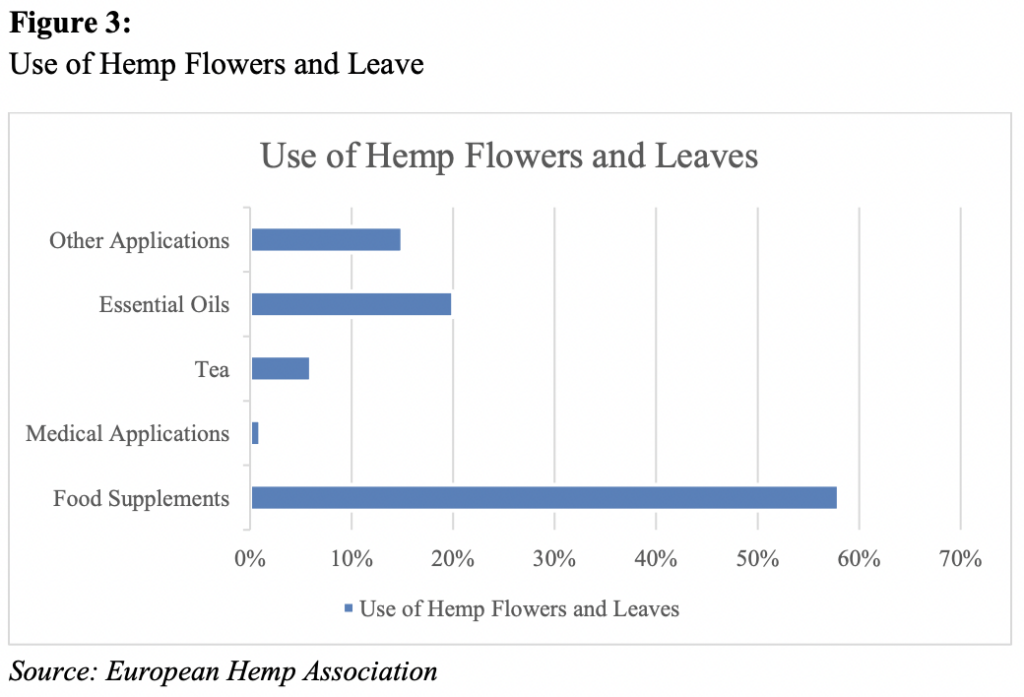
Via USDA.
With respect to environmental conservation, USDA acknowledged that there are several industrial applications for hemp that could mitigate energy dependence from fossil fuel sources.
“There are three main hemp-based products used in construction: lime hemp concrete (LHC), hemp wool, and fiber-board insulation,” the department said. “Hemp concrete can carbon sequester as the amount of carbon stored in the material is higher than the emissions generated during its production, and it continues to store carbon during the building’s life.”
In the U.S., the Department of Energy (DOE) recently awarded Texas A&M University $3.47 million to support a project to 3D print hemp-based building materials known colloquially as hempcrete, with a focus on creating affordable housing.
DOE is separately sponsoring an initiative to develop hemp fiber insulation that’s designed to be better for the environment and public health than conventional preparations are, the agency announced late last year.
The Environmental Protection Agency (EPA) also announced last year that it was awarding a Washington State-based company a $100,000 grant to support the development of sustainable bricks made from industrial hemp.
House and Senate Appropriations Committee leaders have included multiple hemp provisions in recent spending legislation that encourage the exploration of hemp as an environmentally friendlier alternative to plastics.
“Hemp’s versatility and potential usage in products ranging from food to construction materials is leading to a surge in market demand for the plant,” the USDA report concludes. “The European Commission continues to set standards for its production, processing, and trade. Hemp cultivation is projected to continue growing and can help the EU achieve its Green Deal objectives.”
New York Gets 900+ Marijuana Dispensary Applications From People Harmed By Drug War
Medical Disclaimer:
The information provided in these blog posts is intended for general informational and educational purposes only. It is not a substitute for professional medical advice, diagnosis, or treatment. Always seek the advice of your physician or other qualified healthcare provider with any questions you may have regarding a medical condition. The use of any information provided in these blog posts is solely at your own risk. The authors and the website do not recommend or endorse any specific products, treatments, or procedures mentioned. Reliance on any information in these blog posts is solely at your own discretion.
